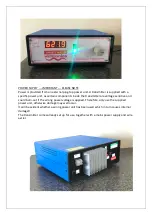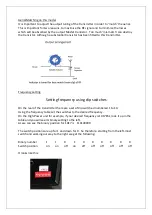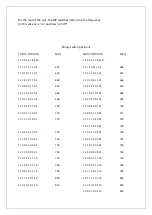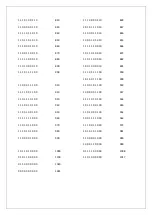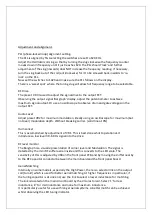
Adjustment and alignment.
PLL (phase-locked loop) alignment setting.
The PLL is aligned by first selecting the switches are set to 620 KHz.
Adjust the Oscillator coil slug so that by turning the slug clockwise the frequency counter
moves down in frequency until it just reaches 620. The PLL should ‘lock’ and further
adjustment of the slug (inwards) does NOT increase the frequency reading. If necessary,
turn the slug back out of the coil (anticlockwise) for it to be screwed back inwards to ‘re-
lock’ on the PLL.
Now set the switches to 1023 and make sure the PLL follows on the display.
There is a ‘sweet spot’ where the tuning slug will allow full frequency range to be selectable.
RF Drive.
The preset VR3 Is used to adjust the signal drive to the output FET.
Observing the output signal ‘Bargraph’ display, adjust the potentiometer to achieve
maximum signal output. Or use an oscilloscope to observe drain and gate voltages on the
output FET.
Audio Level
Adjust preset VR2 for maximum modulation, ideally using an oscilloscope for maximum (but
not over) modulation depth. Without breaking carrier. (solid line at 0%)
Hum cancel
This is accomplished by adjustment of VR1. This is best done whilst operational. It
introduces a low level 30 -60 Hz signal into the drive.
RF level monitor
The Bargraph is a visual representation of carrier level and Modulation. The signal is
detected by the mini RF sniffer aerial inside and this converts to the LED scale. The
sensitivity of this is adjusted by VR4 on the front panel PCB and by moving the sniffer nearby
to the RF Capacitor conductor between the main board and the front panel board.
Aerial Matching
Internally on some models, especially the High Power, there is a selector link on the output
coil (toroid) which is used for better aerial matching. At higher frequencies in particular, if
the tuning capacitor is at one end, use the link to select a lower inductance for matching.
The link is located on the main circuit board by the circular toroid. Select ‘1’ for less
inductance, ‘2’ for mid inductance and none for maximum inductance.
It is particularly useful for use with longer aerial systems. A better match can be achieved
whilst observing the LED tuning indicator.


